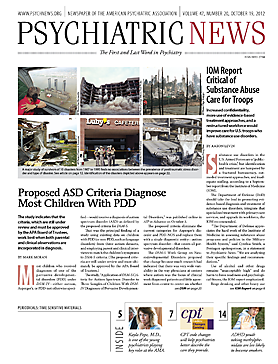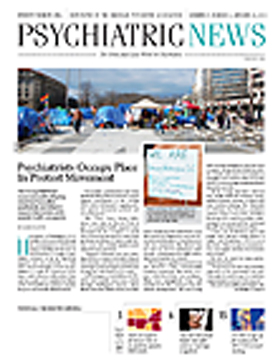Mortality rates for suicide rose substantially over the past decade, and suicide passed motor-vehicle crashes as the leading cause of injury mortality.
Meanwhile, among the five leading causes of unintentional or intentional injury death—motor-vehicle crashes, poisoning, falls, suicide, and homicide—unintentional poisoning exhibited by far the largest rate increase, according to a report appearing online in the September 20 American Journal of Public Health.
Ian Rockett, Ph.D., M.P.H., and colleagues at West Virginia University School of Public Health and other institutions used annual underlying cause-of-death data from the National Center for Health Statistics to describe national trends in fatal injury for 2000–2009. They found that mortality rates for suicide increased by 15 percent during the study period, and by 2009 suicide ranked first as a cause of injury mortality, followed by motor-vehicle crashes, poisoning, falls, and homicide.
The study also found unintentional poisoning increased by a remarkable 128 percent from 2000 to 2009, driven by misuse or abuse of prescription drugs. In 2008, drug overdoses represented 75 percent of unintentional poisoning deaths nationally, with prescription drugs representing 74 percent of the share. Moreover, overdoses of prescription opioid analgesics represented 74 percent of the deaths related to prescription drug use.
“Likely a factor in the epidemic of fatal overdoses from opioids was the aggressive pharmaceutical campaign to promote their use in general, and OxyContin use in particular,” the report states.
(Some good news from the study was that the unintentional motor-vehicle mortality rate declined by 25 percent.)
Rockett and colleagues said that the increase in suicide over the previous decade and suicide’s becoming a leading cause of injury mortality is part of a global trend. “Our finding that suicide now accounts for more deaths than do traffic crashes echoes similar findings for the European Union, Canada, and China.”
They also noted that since suicides are liable to be undercounted, “Distinguishing intentional from unintentional injury is important for surveillance, prevention, treatment, and rehabilitation, a distinction that can be quite elusive in verifying suicides.”
Among factors involved in under-counting are the decline in the combined clinical and forensic autopsy rate, rare use of psychological autopsies in helping medico-legal authorities resolve the manner of death in cases of equivocal intent, and disparities and under-resourcing of the emergency health care and death investigation systems.
“No agency analogous to the police exists to assist medical examiner and coroner offices to investigate suicides, thus complicating their case ascertainment relative to homicides,” the researchers said. “[I]nvestigations of suicide, poisoning, drowning, and other injury deaths are far less likely than are homicide investigations to include a forensic autopsy.
“The rise and magnitude of the suicide rate, including the growing toll associated with military service, reinforce the charge of the National Action Alliance for Suicide Prevention to optimize the effectiveness of the National Strategy for Suicide Prevention.”
(The alliance is a public-private initiative formed to help realize the goals of the National Strategy, first formulated in 2001 under then-Surgeon General David Satcher, M.D., and recently updated under Surgeon General Regina Benjamin, M.D.


